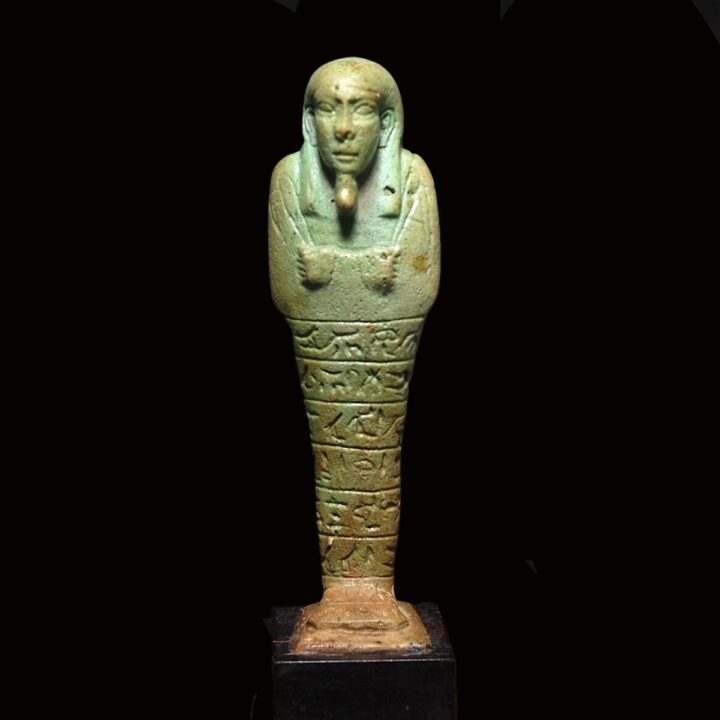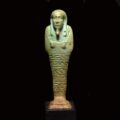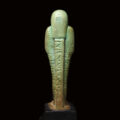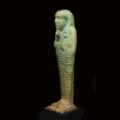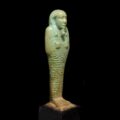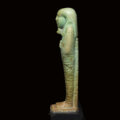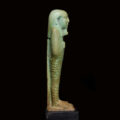Faience Shabti of the Divine Worshipper Pa-di-Neith
Culture: Egyptian
Period: Late period, 26th dynasty, 664-525 B.C.
Material: Faience
Dimensions: 12.5 cm high
Price: Sold
Ref: 1566
Provenance: From the collection of the Egyptologist Jean Yoyotte (1927-2009) and his wife Michèle Yoyotte, called “Poupouti” (1924-2023), acquired in December 1962. In the collection inventory assigned with the number 137. With a copy of the inventory list.
Condition: Intact
Description: Wonderfully preserved faience shabti of the divine worshipper Pa-di-Neith. This title stands for her big influence since the holder oversaw a wide range of tasks and domains of the temple and controlled a significant part of the economic activities. The horizontal inscription in eight lines reaches to the back pillar, where the text continues vertically. It mentions the name and title of the owner, the name of the mother Ta-di-Bastet, as well as excerpts from Chapter 6 of the Book of the Dead. The quote of this chapter served to let the shabtis perform their tasks in the next world. The figure itself in the classical mummiform with a tripartite wig, which leaves the ears free. The prominent round face with striking features, wide-set eyes and the false beard on the chin. The shabti has the arms crossed in front of the chest and holds hoe and hand plow for the field work. Behind the left shoulder hangs the small seed back, which is held with a cord by the right hand. The figure stands on its belonging plinth, which is set in an old wood base. See for the shabtis of the worshipper Pa-di-Neith: Jacques F. Aubert and Liliane Aubert, “Statuettes Égyptiennes, Chaouabtis, Ouchebtis”, Paris, 1974, p. 233. As well as the example in the National Museum Liverpool with the Accession Number 52.55.144. The later refers that the shabtis of Pa-di-Neith originate from tomb 197 in the necropolis of al-Asasif in west Thebes.



